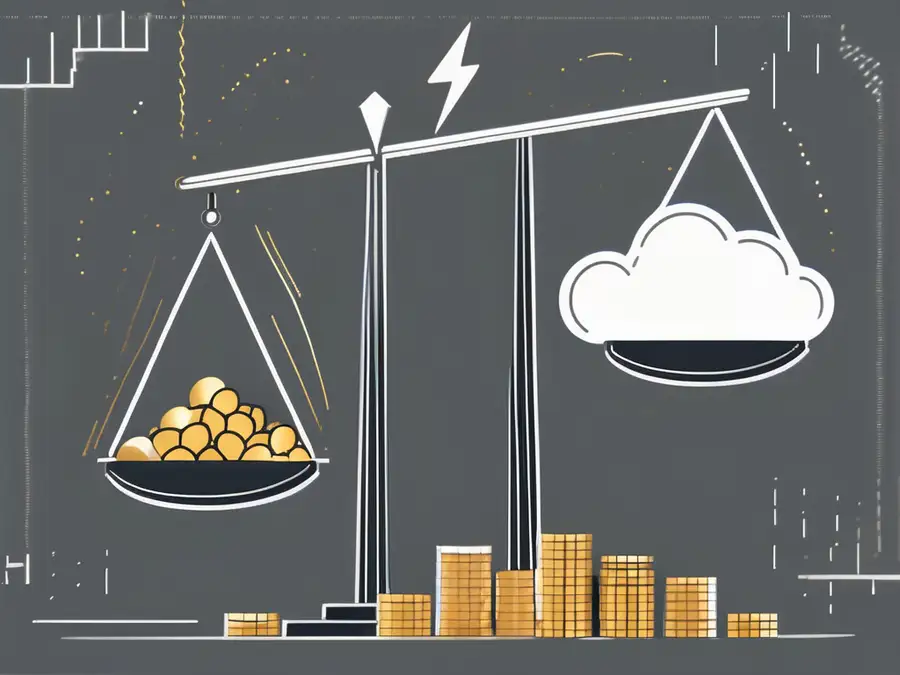How the Treynor Ratio Can Elevate Your Investment Strategy

I have been repeatedly astonished by how a simple formula can shift the trajectory of investment strategies. Over the years, I have learned that mastering risk is just as crucial as pursuing returns. In this article, I will navigate through the intricacies of the Treynor Ratio, a remarkable tool that can enhance your investment prowess significantly. So, let’s dive in!
Understanding the Basics of Risk and Return
Defining Risk in Investment Terms
Risk in investments is often characterized as the potential for losing money or not achieving the expected returns. It's more than just volatility; it encompasses various factors including market movement, political stability, and economic trends. An investor must critically assess these elements to gauge their risk appetite.
My journey as an investor taught me that understanding risk is not just about measuring it. It's about recognizing your own comfort levels with uncertainty. I remember during my early days, I invested in a high-tech startup without fully grasping the market risks involved. Consequently, I lost a substantial amount, which taught me the value of thorough research and sound risk assessment.
The Importance of Return on Investment
Return on Investment (ROI) is the benchmark against which many investors measure their success. It essentially assesses the profitability of an investment relative to its initial cost. The higher the ROI, the more desirable the investment.
Over time, I've realized that focusing solely on high returns can lead to neglecting risks. It’s imperative to balance risk against potential returns to build a robust investment portfolio. By adopting a comprehensive approach, you can achieve a sustainable growth trajectory that shields you from unexpected downturns.
The Treynor Ratio: A Comprehensive Overview
The Concept and Calculation of the Treynor Ratio
The Treynor Ratio, developed by Jack Treynor, evaluates the performance of an investment portfolio relative to its systematic risk. It is calculated using the formula:
Treynor Ratio = (Portfolio Return – Risk-Free Rate) / Beta
In this formula, the portfolio return is your investment return, the risk-free rate is the return on a risk-free asset (like Treasury bills), and beta measures the sensitivity of the asset’s returns to market movements.
Once critical in assessing my investments, applying the Treynor Ratio enabled me to accurately evaluate how well my portfolio performed against its inherent risk. This formula became my guiding light during market volatility, steering me toward more informed decision-making.
Interpreting the Treynor Ratio
A high Treynor Ratio indicates that you are achieving better returns for the risk taken, while a low ratio may suggest that returns are not compensating adequately for the level of risk. This metric becomes particularly useful when comparing different portfolios or funds.
Having employed the Treynor Ratio through various market cycles, I noticed how it helped me differentiate between funds. It was crucial for me during years of market uncertainty, giving me the confidence to make strategic adjustments to my portfolio based on clear data.
The Role of the Treynor Ratio in Risk Management
Risk Assessment with the Treynor Ratio
The Treynor Ratio serves as an essential tool in your risk management arsenal. It enables managers and investors to evaluate whether they’re compensated for the risks they’re taking. When comparing various portfolios, the Treynor Ratio allows a clearer picture of performance in relation to risk.
In my experience, regular comparisons of my investment properties through the Treynor Ratio gave me insights into where I could enhance returns or where to pull back. It guided my risk assessment, allowing for proactive portfolio adjustments that aligned with evolving financial goals.
The Treynor Ratio and Diversification
Diversification is a fundamental principle in reducing risk, and this is where the Treynor Ratio shines. By analyzing multiple portfolios with the ratio, one can ascertain if increasing the diversification enhances overall performance relative to risk.
I vividly recall a scenario where my diversified portfolio exhibited low returns on its Treynor Ratio. This prompted me to re-evaluate my asset allocation and ultimately led to better investment opportunities that compensated for the risks involved.
Implementing the Treynor Ratio in Your Investment Strategy
Aligning the Treynor Ratio with Your Investment Goals
Integrating the Treynor Ratio into your investment strategy requires aligning it with your financial goals. Whether you aim for aggressive capital growth or a more conservative approach, knowing the Treynor Ratio leads to better-planned decisions.
When I set my financial goals, I always incorporate Te Treynor Ratio as a measurement tool. It allows me to track my progress and make necessary adjustments in real time, ensuring that my strategies remain in line with my investment philosophy.
Monitoring and Adjusting the Treynor Ratio
It’s essential to revisit the Treynor Ratio frequently, especially during volatile market conditions. Continuous monitoring can provide insights into necessary portfolio rebalancing or potential asset reallocations.
In my career, I have learned that sitting back and assuming past performance will hold true is a recipe for failure. On several occasions, proactive monitoring of the Treynor Ratio allowed me to pivot quickly, ensuring that my investments remained aligned with dynamic market conditions.
The Limitations and Criticisms of the Treynor Ratio
Understanding the Limitations of the Treynor Ratio
Despite its advantages, the Treynor Ratio is not without its limitations. For one, it relies heavily on beta as a measure of risk, which may not be adequate for all types of investments. It also assumes that higher beta equates to higher risk, potentially leading to misleading conclusions.
As I learned the hard way, relying solely on the Treynor Ratio for decision-making can misrepresent the risk landscape, especially with unconventional assets. A holistic approach gathering various indicators is vital to make informed investment choices.
Addressing the Criticisms of the Treynor Ratio
Critics argue that the Treynor Ratio oversimplifies risk, neglecting other vital factors, such as unique investment circumstances or managerial skill. Thus, I have found that supplementing the Treynor Ratio with additional analytical tools yields the best outcomes.
In my practice, I frequently combine the Treynor Ratio with other metrics like the Sharpe Ratio and Information Ratio. This multifaceted approach provides a more nuanced understanding of performance relative to risk and ensures holistic investment decision-making.
FAQs
What is the Treynor Ratio?
The Treynor Ratio measures the returns earned in excess of that which could have been earned on a risk-free investment per each unit of market risk (beta).
How is the Treynor Ratio calculated?
The formula for the Treynor Ratio is (Portfolio Return – Risk-Free Rate) / Beta.
What are the advantages of using the Treynor Ratio?
The Treynor Ratio effectively evaluates the performance of investment portfolios concerning the risk taken, allowing for better comparisons and informed decision-making.
What are the criticisms of the Treynor Ratio?
Critics highlight that the Treynor Ratio may oversimplify risk by heavily relying on beta, and may not be suitable for all investment types.
Should I rely solely on the Treynor Ratio for investment decisions?
No, it is advisable to combine the Treynor Ratio with other metrics to achieve a comprehensive understanding of your investment portfolio.
By mastering risk through tools like the Treynor Ratio, you can navigate the investment landscape with greater confidence. It has profoundly impacted my approach; I hope it does the same for you!
Ready to take your investment strategy to the next level with the Treynor Ratio and beyond? Discover Morpher, the revolutionary trading platform that leverages blockchain technology for a seamless, fee-free trading experience. With Morpher, you can trade a multitude of assets, from stocks and cryptocurrencies to unique markets like NFTs, all with fractional investing, short selling capabilities, and up to 10x leverage. Sign up now to gain control over your investments with Morpher's non-custodial wallet and receive your free sign-up bonus. Elevate your trading game at Morpher.com.

Disclaimer: All investments involve risk, and the past performance of a security, industry, sector, market, financial product, trading strategy, or individual’s trading does not guarantee future results or returns. Investors are fully responsible for any investment decisions they make. Such decisions should be based solely on an evaluation of their financial circumstances, investment objectives, risk tolerance, and liquidity needs. This post does not constitute investment advice.

Painless trading for everyone
Hundreds of markets all in one place - Apple, Bitcoin, Gold, Watches, NFTs, Sneakers and so much more.

Painless trading for everyone
Hundreds of markets all in one place - Apple, Bitcoin, Gold, Watches, NFTs, Sneakers and so much more.









